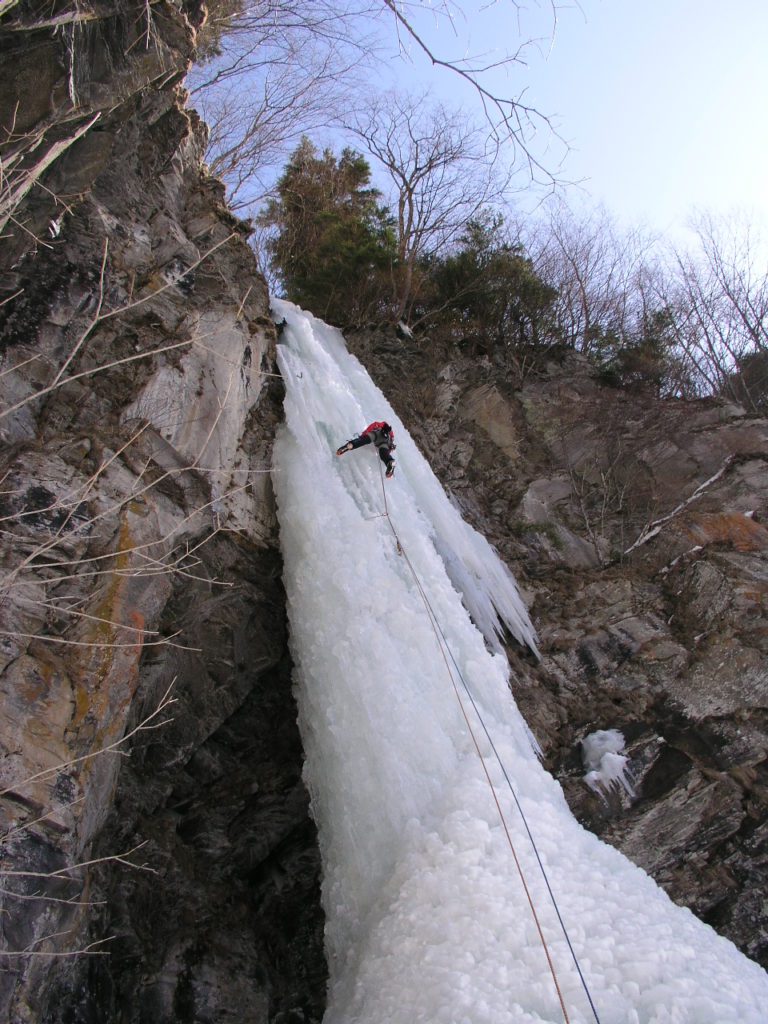
Ice climbers of all levels – and ages – have found a “sweet spot” among the eight peaks of Southern Nagano.
According to legend, there was once an 8,000-meter mountain that dwarfed Mt. Fuji. One day Fuji-san got jealous and knocked her over, creating eight smaller mountains (the Yatsugatake Range
Geologists tell a different story, with a similar result, that Yatsugatake was a giant volcano until an eruption blew the top off, leaving behind eight independent peaks. Today the distinct ridgelines left over from the old mountain form the borders of Yamanashi and Nagano prefectures.
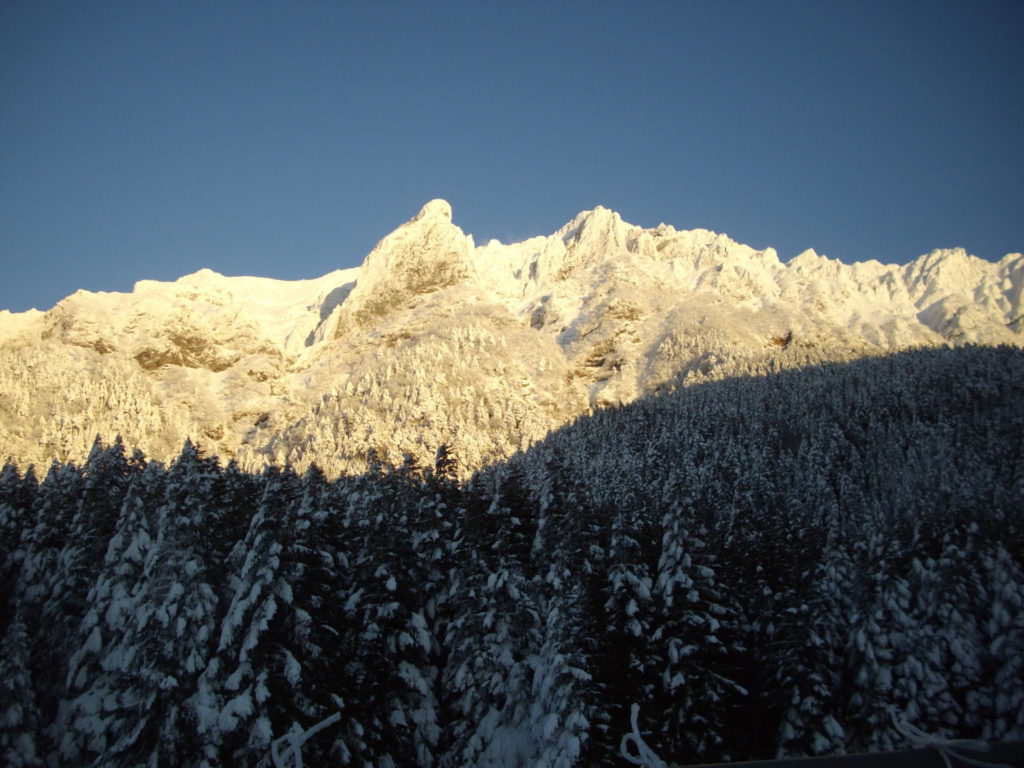
The highest peak in the Yatsugatake Range is Akadake (2,899 meters), which means “red peak,” and the neighboring summits are all higher than 2,500 meters as well. When approaching from the south on the Chuo Expressway, you can easily imagine the slope lines extending high up toward the original summit, while Akadake makes a formidable impression because the weathered, eroded rock is colored red and black with dense forest covering all but the highest peaks.
In winter, however, the landscape takes on a very different feel as these same mountains are covered in ice.
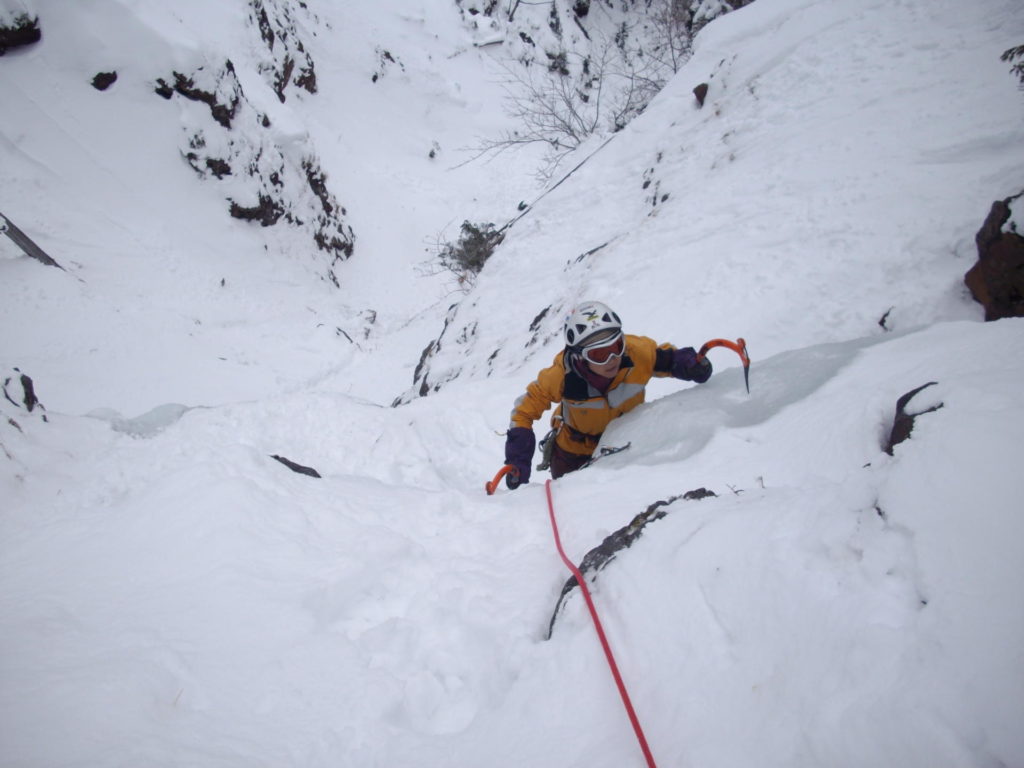
Honshu’s ‘Iceland’
About the time skiers and snowboarders are enjoying consistently heavy snowfalls in northern Nagano, further south the Yatsugatake Range gets sunny weather nearly 70 percent of the time.
The low pressure disturbances moving north to south which bring the snow don’t affect the southern part of the prefecture much, so temperatures stay lower with clear skies and strong winds; not the greatest skiing conditions, but ideal for turning mountain streams and waterfalls to a playground of solid ice.
Yatsugatake’s ice climbing season (on natural ice) starts at the end of November and lasts until mid-April. Just before the first snow falls, usually just before Christmastime, is a great time for beginners to get out on the ice.
The low-angle frozen streams are great for novices or those wanting to warm up before heading to the more challenging vertical falls.
If you are looking for the extreme stuff, it’s there too. An artificial ice wall is built in front of Akadake Kōsen Hut, called the “Ice Candy.” It is located at an altitude of 2,215 meters, just under Mt. Yokodake, with the stunning Daidoshin and Shodoshin rock formations in the background, also popular in winter for rock climbing.
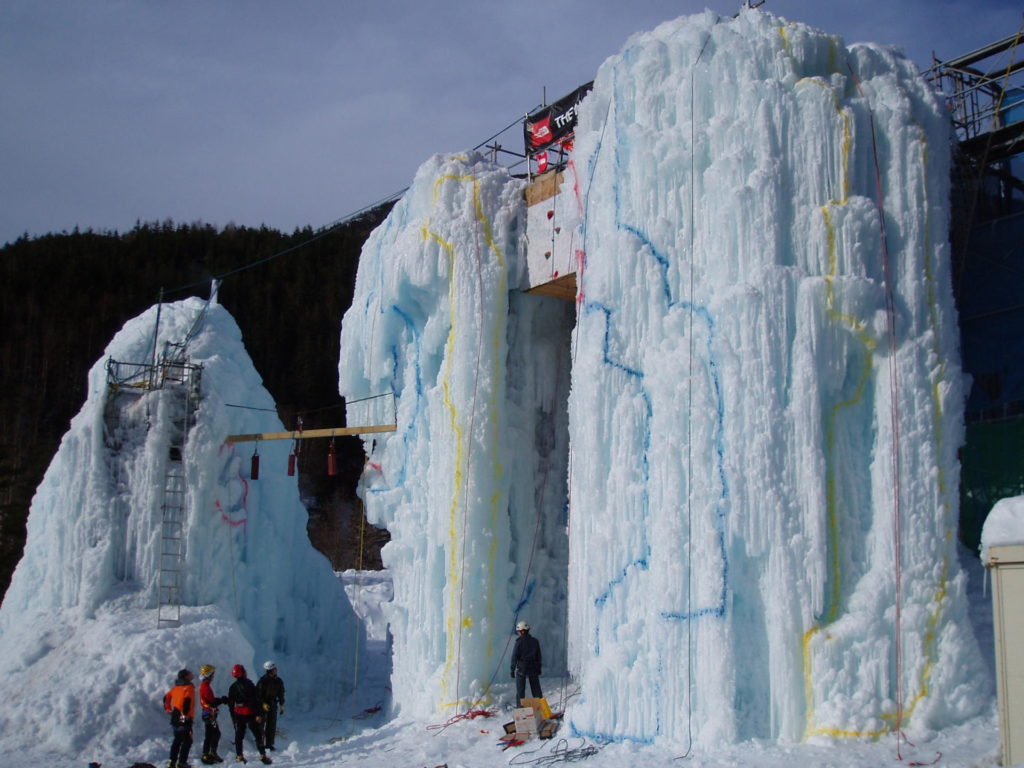
The hut is the launching point for Jōgō-sawa, Uradōshin runze, ice gully climbing routes and ascending Akadake.
If you take the bus or park at Minoto-guchi you can hike up from there (two hours, 30 minutes) or leave from further up at Akadake Sanso (one hour, 30 minutes) on easy winter trails.
On weekends you won’t have to break the trail but, if there is not much snow, the trail is usually very icy, so it’s wise to put on crampons. You start on a dirt road, closed to traffic, and continue on a nice winding trail that follows beside a partly frozen stream tinted slightly red from lukewarm volcanic springs higher up the valley.
The trail crosses the river several times over some safe bridges until the gorge opens before you revealing nature’s surrounding secrets; rock cliffs, frozen gullies and, if you look carefully in the direction you’re walking, the most prominent feature: the 40-meter-high green frozen waterfall, Daidōshin Ōtaki.
Then, once you step out of the forest, the hut suddenly appears before you as well as a beauty of man-made engineering, an artificial ice wall that is always packed with climbers.
Trying ‘Ice Candy’
Ice Candy is a popular spot for Japanese guides who bring their clients here to learn ice climbing skills. The climbing, on different ice grades from simple slopes to advanced overhangs, is safe; all ropes must be set from the top, so there is no lead climbing. There is no endless “freeze to death” belaying, and you can take a tea break inside the hut whenever you feel like it.
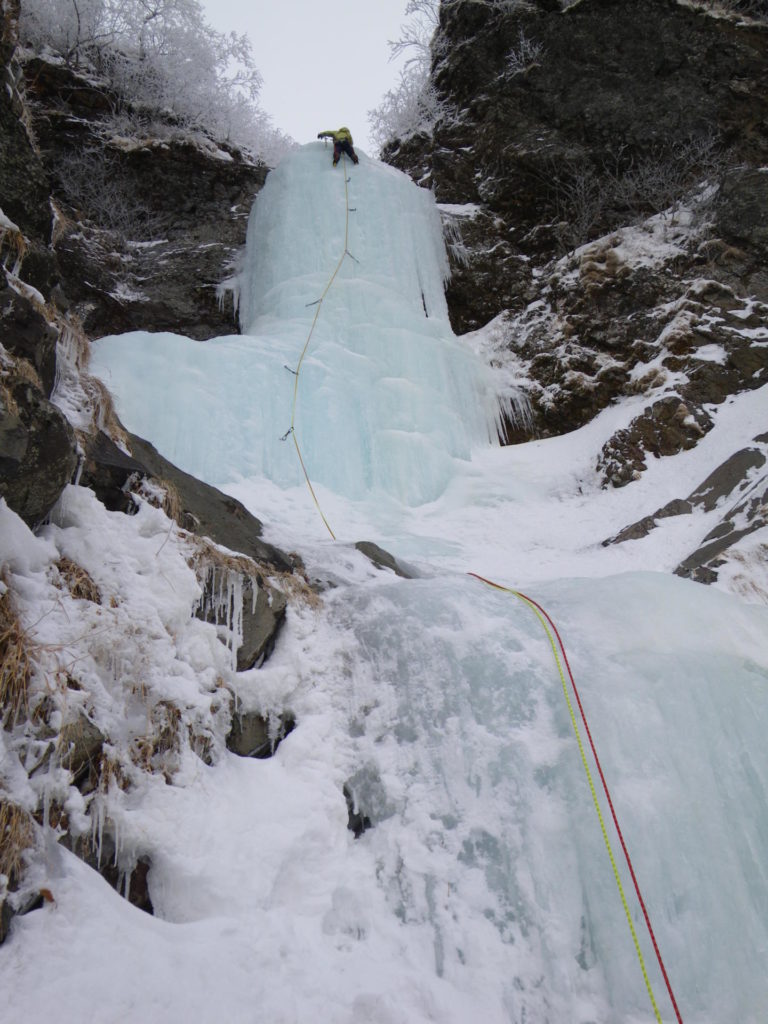
You may think ice climbing is a sport for the young, but you’ll find enthusiasts of all ages, even Japanese women in their 50s and 60s, fully equipped with double axes, crampons and other modern climbing equipment.
To try Ice Candy for the day, there is a ¥500 registration fee, but most guides and their clients stay in the hut. Camping is allowed just beside the hut but, if it is crowded on weekends, you may be refused access to the wall, as priority will be with people who booked into the hut. It’s a cozy place to stay and a good place to meet Japanese climbers, and the food is excellent, but note the bath is only open in summer.
Another bonus is the hut carries the latest ice climbing equipment you can test and provides good information about climbing the wall, such as safety issues and ice routes, as well as natural climbing info such as avalanche risks, ice quality and weather. The annual Asian Ice Climbing Cup is also held here, and it is something to see acrobatic overhang tricks you hardly ever see in ice climbing anymore.
Weekend Warriors
If you want a relatively easy-going winter mountaineering adventure, you can combine some ice climbing experience on the wall with ascending Yatsugatake’s highest peak Akadake. The trip can be done in only two days round trip from Tokyo. But be sure to give your self time to soak your frozen body in one of the hot springs at the base of the mountains.
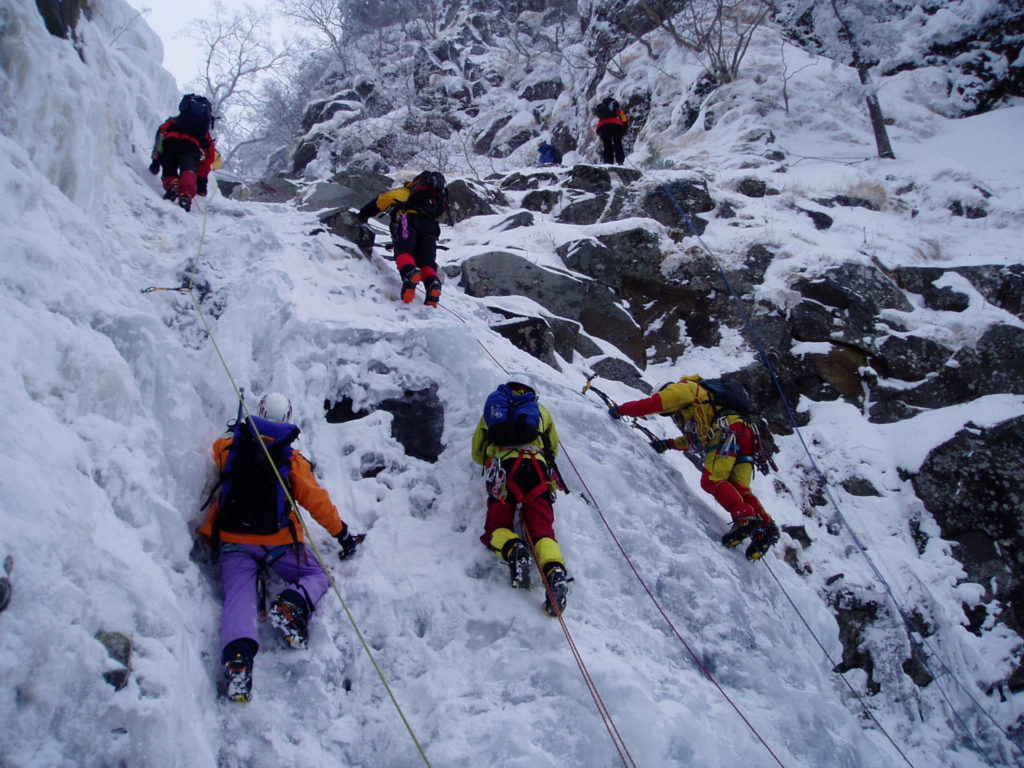
Although the Yatsugatake Range is easily accessible from Tokyo and many huts are open year-round, do not underestimate the conditions. In winter it can be brutally windy with extremely low temperatures. Make sure to plan your trip well and carry all the necessary equipment.
Every year there are reports of climbers suffering frostbite, so if you’re short on time and/or experience, you should consider hiring a guide. They will take care of everything so you can concentrate on enjoying the simple style of climbing frozen liquid pillars, where hand holds and footholds are waiting for you whenever you need them.
ESSENTIALS
Akadake Kōsen Hut
A night at the hut costs ¥9,000 per person with two meals, and reservations are recommended on weekends or holidays. It’s open all year, but the heated bath is not available in winter. Camping is ¥500 a night, and there is a nice heated toilet behind the hut. Water is available, and simple foods such as ramen, udon or curry can be purchased as well as a selection of alcohol and soft drinks. Tel. 090-4824-9986.
Getting There
By Train: If you are on a weekend trip from Tokyo, it is recommended to take the earliest Super Azusa train from Shinjuku to Chino Station. There are regular buses going to Minoto-guchi from Chino, but make sure to check the bus schedule for return times. If you miss the last bus, there are usually taxis waiting, but if you can’t find one, a nearby hut can help arrange one.
By Car: Take the Chuo Expressway to Kobuchisawa, then follow signs to Minoto-guchi. From there you will need chains to reach the end of the four-kilometer long icy road to Akadake Sanso. Parking is ¥1,000 a day.
Further Reading
If you would like further information on ice climbing in Japan, Kentaro Hirakawa’s guidebook “Challenge Ice Climbing” (Japanese only) is available at mountaineering stores throughout Japan. Inside you will find route topos, grading, climbing season data and other useful info, even if you don’t read Japanese.
“Challenge Ice Climbing” by Kentaro Hirakawa
氷の世界へ チャレンジ!アイスクライミング 廣川健太郎
(ISBN4-8083-0818-5 C0075) Price: ¥2,000.




